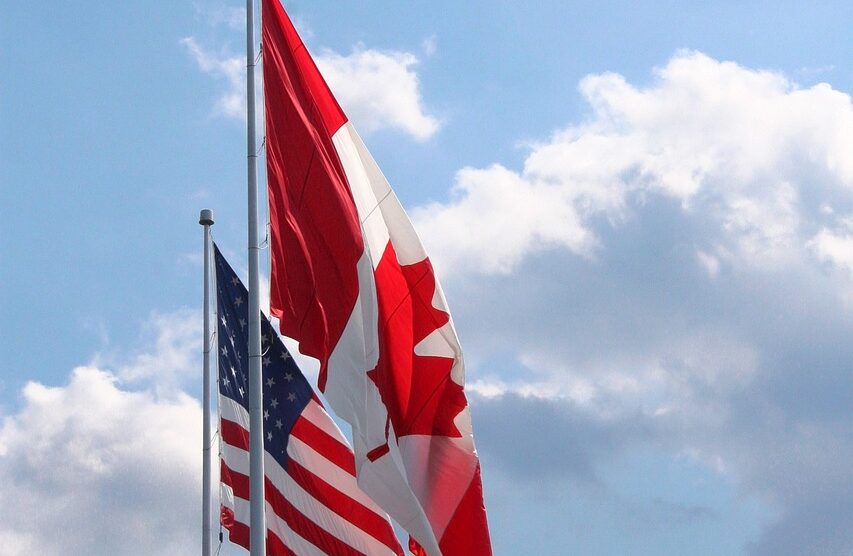Both the United States and Canada have been some of the most immigrant-friendly countries in the world for years. But when it comes to immigrant-owned startups, each of them has different business environments and immigration programs for foreign entrepreneurs. This begs the question: Which is the most friendly out of the two for startups? This article explains the immigration and business terrains of the US and Canada to help guide intending immigrant entrepreneurs in their feasibility study.
The overall USA Business environment
The United States is reliably known to be the best internationally for its ease of doing business and overall competitiveness. It is supported by a regulatory environment that is favorable for starting and operating a business.
As a stable democracy with a predictable and transparent legal system, the United States treats domestic and foreign businesses equally under the law. According to the World Bank’s Ease of Doing Business Rankings, the United States is rated high as 6th among 190 economies.
The USA business environment is conducive enough for free enterprises, and it fosters the growth of the economy. Additionally, although the procedures for setting up and registering a business vary by state or territory, the process is generally straightforward, quick, and inexpensive. 25% of new businesses in the US are owned or driven by immigrants. This further shows that the environment is conducive for immigrant-owned enterprises to thrive.
The overall Canada Business environment
Canada has long supported foreign investment. Like all advanced countries, Canada has laws to protect consumers, investors, workers, inventors, and the environment. It is then not surprising to see immigrant-owned businesses thrive there. According to a report, in 2018, the number of newcomer entrepreneurs in Canada grew to 251,600, recording a 22% increase since 2006.
Canada is often recognized as one of the world’s strongest economies, in large part because of its banking regulatory structure. As a result, Canada’s strong financial and banking services sector is a favorable environment for foreign investment, especially during economic uncertainty.
The Canadian technology sector has also grown in recent years. These investments, along with those made by large tech companies and others, help to highpoint Canada’s growing importance as an attractive investment and innovation place. Among the 190 economies ranked by the World Bank for ease of doing business, Canada ranked high standing in 23rd position.
The Immigration Process for Startup Founders in the USA
The United States has a wide range of immigration programs which foreign entrepreneurs can leverage for startups. They include permanent and temporary visas. For instance, the popular H-1B visa can be obtained for business purposes, as long as an applicant can demonstrate the eligibility requirements for the visa. Depending on each applicant’s level of preparedness and compliance for the application process, an H-1B visa for a startup can be obtained within 180 days.
Another temporary visa for business purposes is the L-1 visa for intra-company transfer. This visa works best for business people who already have business overseas and want to have a branch or new business in the United States. An essential condition of the new L-1 office visa is that the business be operational within one year. While it varies slightly by company, it usually means hiring new employees, fulfilling contract orders, maintaining inventory, having a revenue stream, etc.
There is also the E-2 Treaty investor visa for nationals of countries that have treaty agreements with the US. To qualify, applicants must have at least 50% proof of ownership and operational control as a managerial position. It must be demonstrated that the business can generate sufficient income to make a significant financial contribution or provide sufficient support to the applicant and his family. All these temporary visas can be renewed to allow business owners to continue to run their businesses in the US, as long as they keep meeting the requirements for renewal.
Apart from the temporary business visas, there are also various permanent visas for immigrant business owners. They include the EB-5 investor visa, which can be obtained by applicants who can demonstrate their ability to invest at least $900,000 or $1.8 million into the US economy and create a certain number of full-time employment opportunities. There is also the EB-2 National Interest Waiver visa, which can be obtained both for employment and business purposes.
The Immigration Process for Startup Founders in Canada
Canada has a dedicated immigration route for foreign entrepreneurs. This is known as the Start-up Visa Program.
You can qualify for the visa if you can demonstrate that you have a qualifying business, a designated investment organization supports your business idea, and you meet the language requirements. You will also need to prove that your business meets the requirements for ownership, and you have enough money to settle and live in Canada before making any money from your business.
The processing time for this visa may vary. In general, however, Immigration Canada states that the startup Visa program’s average processing time is between 12 and 16 months. Although it takes a long time, you can also apply for a work permit once you collect your letter of support, which allows you to move to Canada and start working on your company before approving your Permanent Residence application. All of this is to say, you need to be extra careful to meet all of the Canada startup visa requirements during the process and complete them to ensure a smooth transition to Canada.
So, Which Is the Most-Friendly?
Judging from the available facts and figures, both the US and Canada are fantastic environments for immigrant-owned startups. So, saying one is more friendly than the other will be a matter of perception. Depending on the exact business you are venturing into, there are areas where the US will be the most ideal, and there are areas where the most suitable would be Canada. It is worth noting that the two neighboring countries treat each business and immigration process on a case-specific basis. So, what works for Applicant A may not work for Applicant B.
For instance, while the US ranks higher in the ease of doing business and has many business-friendly visas, obtaining many of those visas has become more difficult in the past few years. And while Canada may offer an easier immigration route, its economy ranks below that of the US, $1.8 trillion to 20.4 trillion. The United States also has a larger population, which might serve as leverage for business owners who aim to have a large customer base.
Conclusion
The best way to approach this process is to work with immigration and business experts to help determine the most suitable of the two, based on your own case-specific plan, preference, budget, and other factors.





